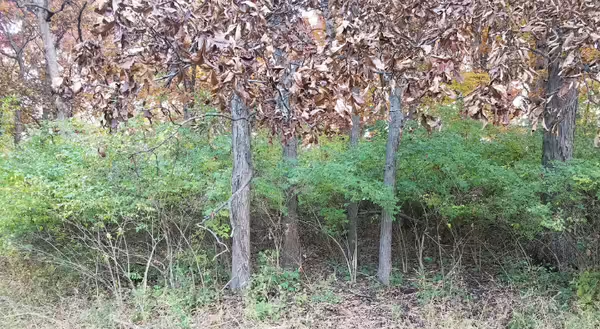
The management of Illinois’ forests has become an increasingly difficult task for landowners focused on maintaining and enhancing native plant diversity. I have often thought of it as a similar process to weeding a vegetable garden, with a diverse mix of our native forest trees as the vegetable crop and the weeds being everything from invasive species to some of the our native trees that tend to overpopulate or dominate woodlands without some type of natural disturbance.
Just a few short years of not paying attention and “weeding” your forest garden and many years of progress can be lost. Why the need for all this weeding to maintain a naturally occurring ecosystem?
Simply put, Mother Nature used to do all this weeding in the form of natural disturbance. Prior to European settlement, extensive contiguous prairie and forest covered Illinois. Over millennia, these ecosystems functioned on the landscape level, with natural disturbance such as fire, wind storms, floods, droughts, insect outbreaks and other factors maintaining a diverse “garden” of plants. Disturbance actually worked to maintain a diversity of plants by giving key players an edge over others.
In our forests, the oak-hickory forest type has been identified as the most diverse woodland plant community that occurs naturally in Illinois. It supports the greatest plethora of plants, insects, mammals and other biota. However, fire was a key disturbance factor that worked to weed the garden and keep the crops (oak species and others) healthy. There is significant evidence that Native Americans, along with Mother Nature, had a huge part in ensuring that fire was part of this ecosystem.
Historically, fire worked to weed the garden by favoring oaks and other fire-tolerant forest plants, while reducing the numbers of less fire-tolerant, often shade-loving plants. Without fire, or some other kind of disturbance, shade-tolerant plants tend to dominate forest understories, outcompeting oaks and other species, and changing forest composition.
Today, it takes a conscious effort on the part of forest landowners to maintain a diverse woodland ecosystem on their property. Exclusion of fire following European settlement is a huge factor, since our ever fragmented landscape does not function as the large expansive ecosystem it used to be. Currently, the average sized forest in Illinois is about 30 acres and privately owned, making the decisions of private landowners incredibly important for preserving plant diversity.
In the last century or longer, humans have introduced foreign, invasive plants to North American ecosystems from coast to coast, putting new pressures on our forests. Without constant “weeding,” our forested gardens become overrun with invasives such as bush honeysuckle, garlic mustard and others. These non-native weeds outcompete native tree seedlings in the understory, precluding the next generation of forest from developing. If left unchecked, invasive plants may be all that’s left when the current overstory of native trees die from old age or disturbance.
It is a never-ending battle, or weeding effort, to keep our native plants competitive in forests. Thankfully, ecologists, foresters and others have begun to understand the key factors in managing invasive plants, and effective management strategies have been studied and applied across the U.S.
One local organization focused on assisting landowners with control measures to weed out invasive plants is the Headwaters Invasive Plant Partnership. The group is a partnership between land managers, private landowners, non-profit organizations, government agencies and others. Their mission is to reduce the impact of invasives species across central Illinois by sharing information and resources so we can all successfully accomplish the continuous battle of weeding our native gardens.
Recently, the group was awarded more than $400,000 to assist landowners with management of invasive species and other forest management practices focused on keeping our woodlands healthy. This funding is part the Regional Conservation Partnership Program, a program offered by the Natural Resources Conservation Service, which is focused on assisting private landowners with conservation efforts on their property.
"We are excited to offer this opportunity to central Illinois forest landowners," says Kaleb Lukens, program coordinator for the group. “The RCPP funds will be available for the next three years, and we hope to assist as many landowner as we can connect with in that time period.”
The organization has partnered with the Champaign County Soil and Water Conservation District to provide both financial and technical assistance through the conservation program for forested landowners in 11 central Illinois counties. If you are interested in seeking assistance for management of your forest, please contact the group at hippcwma@gmail.com.
Ryan Pankau is a horticulture educator with the UI Extension, serving Champaign, Ford, Iroquois and Vermilion counties.
Originally published in the News-Gazette on August 17, 2019.